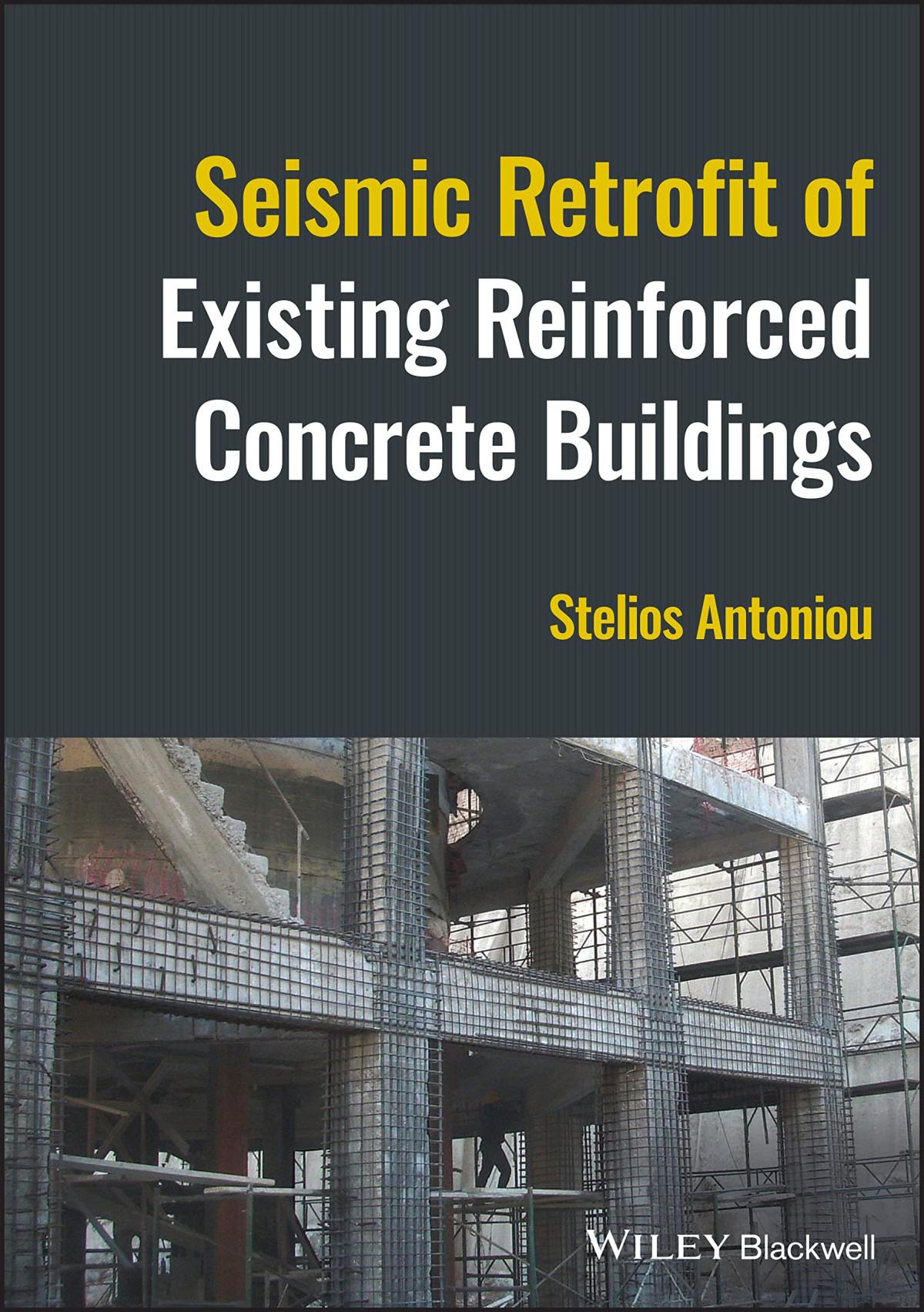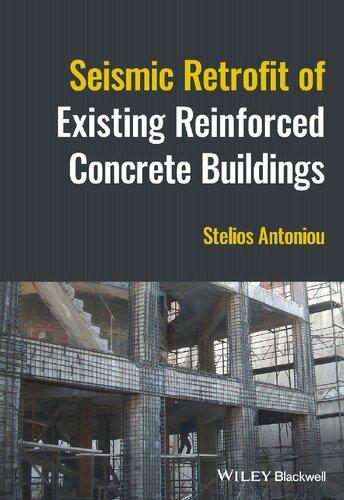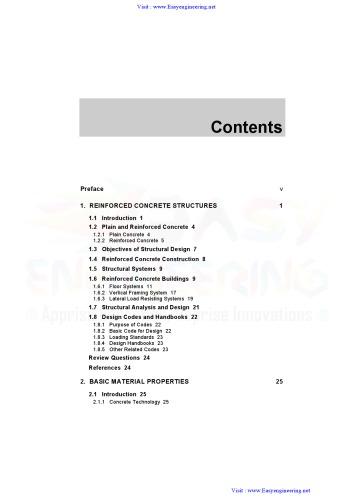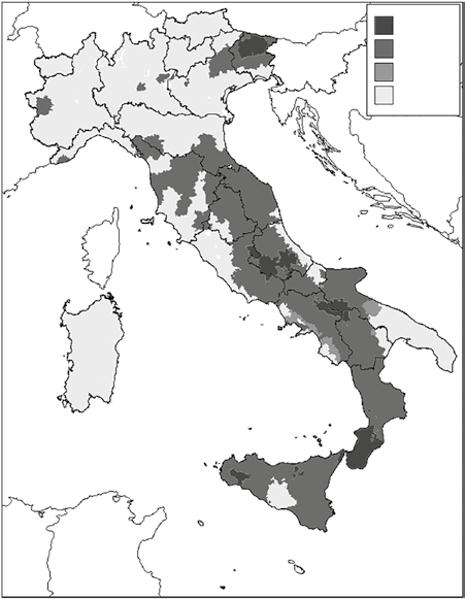
https://ebookmass.com/product/seismic-retrofit-of-existing-

Instant digital products (PDF, ePub, MOBI) ready for you
Download now and discover formats that fit your needs...
Seismic Retrofit of Existing Reinforced Concrete Buildings Stelios Antoniou
https://ebookmass.com/product/seismic-retrofit-of-existing-reinforcedconcrete-buildings-stelios-antoniou-2/
ebookmass.com
Reinforced Concrete Design S Unnikrishna Pillai

https://ebookmass.com/product/reinforced-concrete-design-sunnikrishna-pillai/
ebookmass.com
Engineering CE 327: reinforced concrete design James K. Wight
https://ebookmass.com/product/engineering-ce-327-reinforced-concretedesign-james-k-wight/
ebookmass.com
Cooking Basics For Dummies®, 5th Edition Bryan Miller


https://ebookmass.com/product/cooking-basics-for-dummies-5th-editionbryan-miller/
ebookmass.com

Explorations in Cinema through Classical Indian Theories: New Interpretations of Meaning, Aesthetics, and Art 1st ed. 2020 Edition Gopalan Mullik
https://ebookmass.com/product/explorations-in-cinema-throughclassical-indian-theories-new-interpretations-of-meaning-aestheticsand-art-1st-ed-2020-edition-gopalan-mullik/
ebookmass.com

Seismic Retrofit of Existing Reinforced Concrete Buildings
This edition first published 2023 © 2023 John Wiley & Sons Ltd
All rights reserved. No part of this publication may be reproduced, stored in a retrieval system, or transmitted, in any form or by any means, electronic, mechanical, photocopying, recording or otherwise, except as permitted by law. Advice on how to obtain permission to reuse material from this title is available at http://www.wiley.com/go/permissions.
The right of Stelios Antoniou be identified as the author of this work has been asserted in accordance with law.
Registered Office
John Wiley & Sons, Inc., 111 River Street, Hoboken, NJ 07030, USA
John Wiley & Sons Ltd, The Atrium, Southern Gate, Chichester, West Sussex, PO198SQ, UK
For details of our global editorial offices, customer services, and more information about Wiley products visit us at www.wiley.com.
Wiley also publishes its books in a variety of electronic formats and by print-on-demand. Some content that appears in standard print versions of this book may not be available in other formats.
Trademarks: Wiley and the Wiley logo are trademarks or registered trademarks of John Wiley & Sons, Inc. and/or its affiliates in the United States and other countries and may not be used without written permission. All other trademarks are the property of their respective owners. John Wiley & Sons, Inc. is not associated with any product or vendor mentioned in this book.
Limit of Liability/Disclaimer of Warranty
While the publisher and authors have used their best efforts in preparing this work, they make no representations or warranties with respect to the accuracy or completeness of the contents of this work and specifically disclaim all warranties, including without limitation any implied warranties of merchantability or fitness for a particular purpose. No warranty may be created or extended by sales representatives, written sales materials or promotional statements for this work. This work is sold with the understanding that the publisher is not engaged in rendering professional services. The advice and strategies contained herein may not be suitable for your situation. You should consult with a specialist where appropriate. The fact that an organization, website, or product is referred to in this work as a citation and/or potential source of further information does not mean that the publisher and authors endorse the information or services the organization, website, or product may provide or recommendations it may make. Further, readers should be aware that websites listed in this work may have changed or disappeared between when this work was written and when it is read. Neither the publisher nor authors shall be liable for any loss of profit or any other commercial damages, including but not limited to special, incidental, consequential, or other damages.
Library of Congress Cataloging-in-Publication Data is Applied for:
Hardback ISBN: 9781119987321
Cover Design: Wiley
Cover Image: Courtesy of Dr. Stelios Antoniou
Set in 9.5/12.5pt STIXTwoText by Straive, Pondicherry, India
Contents
Foreword by Rui Pinho xvii
Acknowledgments xix
1 Introduction 1
1.1 General 1
1.2 Why Do Old RC Buildings Need Strengthening? 3
1.3 Main Differences Between Assessment and Design Methodologies 4
1.4 Whom Is this Book For? 7
1.5 Main Standards for the Seismic Evaluation of Existing Structures 8 References 12
2 Know Your Building: The Importance of Accurate Knowledge of the Structural Configuration 15
2.1 Introduction 15
2.2 What Old RC Buildings Are Like 16
2.2.1 Lack of Stirrups 17
2.2.2 Unconventional Reinforcement in the Members 18
2.2.3 Large, Lightly Reinforced Shear Walls or Lack of Shear Walls 19
2.2.4 Lap Splices 22
2.2.5 Corrosion 22
2.2.6 Geometry: Location of Structural Members 25
2.2.7 Geometry: Bad Alignment of the Columns 25
2.2.8 Geometry: Arbitrary Alterations During Construction or During the Building’s Lifetime 26
2.2.9 Bad Practices with Respect to the Mechanical and Electrical Installations 26
2.2.10 Soft Ground Stories 28
2.2.11 Short Columns 28
2.2.12 Different Construction Methods 30
2.2.13 Foundation Conditions 30
2.2.14 Discussion 32
2.2.15 One Final Example 34
4.4.6 Mix Proportions for the Dry-Mix Process 85
4.4.7 Equipment and Crew 86
4.4.7.1 Dry-Mix Process 86
4.4.7.2 Wet-Mix Process 87
4.4.8 Curing and Protection 87
4.4.9 Testing and Evaluation 88
4.5 New Reinforced Concrete Shear Walls 89
4.5.1 Application 89
4.5.2 Foundation Systems of New Shear Walls 97
4.5.3 Advantages and Disadvantages 98
4.5.4 Design Issues: Modeling and Analysis 98
4.6 RC Infilling 99
4.6.1 Application 99
4.6.2 Advantages and Disadvantages 100
4.7 Steel Bracing 101
4.7.1 Application 101
4.7.2 Advantages and Disadvantages 105
4.7.3 Design Issues: Modeling, Analysis, and Checks 106
4.8 Fiber-Reinforced Polymers (FRPs) 106
4.8.1 FRP Composite Materials 106
4.8.2 FRP Composites in Civil Engineering and Retrofit 107
4.8.3 FRP Composite Materials 109
4.8.4 FRP Wrapping 110
4.8.5 FRP Laminates 115
4.8.6 Near Surface Mounted FRP Reinforcement 119
4.8.7 FRP Strings 120
4.8.8 Sprayed FRP 122
4.8.9 Anchoring Issues 123
4.8.10 Advantages and Disadvantages of FRP Systems 123
4.8.11 Design Issues 125
4.9 Steel Plates and Steel Jackets 127
4.9.1 Advantages and Disadvantages 130
4.9.2 Design Issues 131
4.10 Damping Devices 131
4.11 Seismic Isolation 133
4.11.1 Type of Base Isolation Systems 136
4.11.2 Advantages and Disadvantages 138
4.11.3 Design Issues 138
4.12 Selective Strengthening and Weakening Through Infills 139
4.13 Strengthening of Infills 141
4.13.1 Glass or Carbon FRPs 142
4.13.2 Textile Reinforced Mortars TRM 143
4.13.3 Shotcrete 145
4.14 Connecting New and Existing Members 145
4.14.1 Design Issues 147
5.5.18 Bonus Case Study 2: Strengthening of an Industrial Building 262
5.5.19 Bonus Case Study 3: Strengthening of a Residential Building 263 References 268
6 Performance Levels and Performance Objectives 269
6.1 Introduction 269
6.1.1 Selection of Performance Objectives in the Design of New Buildings 269
6.1.2 Selection of Performance Objectives in the Assessment of Existing Buildings 270
6.2 Seismic Assessment and Retrofit Procedures 270
6.2.1 Seismic Assessment Procedures 270
6.2.2 Seismic Retrofit Procedures 271
6.3 Understanding Performance Objectives 272
6.3.1 Target-Building Performance Levels 272
6.3.1.1 Structural Performance Levels 273
6.3.1.2 Nonstructural Performance Levels 276
6.3.1.3 Target Building Performance Levels 279
6.3.2 Seismic Hazard Levels 280
6.3.3 Performance Objectives 282
6.3.4 Eurocode 8, Part 3, and Other Standards 284
6.3.5 The Rationale for Accepting a Lower Performance Level for Existing Buildings 286
6.4 Choosing the Correct Performance Objective 287 References 289
7 Linear and Nonlinear Methods of Analysis 291
7.1 Introduction 291
7.2 General Requirements 294
7.2.1 Loading Combinations 294
7.2.2 Multidirectional Seismic Effects 295
7.2.3 Accidental Torsional Effects 295
7.3 Linear Static Procedure 296
7.4 Linear Dynamic Procedure 296
7.5 Nonlinear Structural Analysis 298
7.5.1 Nonlinear Structural Analysis in Engineering Practice 298
7.5.2 Challenges Associated with Nonlinear Analysis 300
7.5.3 Some Theoretical Background 301
7.5.3.1 Introduction 301
7.5.3.2 Sources of Nonlinearity 301
7.5.3.3 Solving Nonlinear Problems in Structural Analysis 302
7.5.3.4 Convergence Criteria 305
7.5.3.5 Numerical Instability, Divergence, and Iteration Prediction 306
7.5.4 Implications from the Basic Assumptions of Nonlinear Analysis 307
7.5.5 How Reliable Are Numerical Predictions from Nonlinear Analysis Methods? 309
8.10 Shear Deformations 359
8.11 Foundation Modeling 359
8.12 How Significant Are Our Modeling Decisions? 359 References 360
9 Checks and Acceptance Criteria 363
9.1 Introduction 363
9.2 Primary and Secondary Members 364
9.3 Deformation- Controlled & Force- Controlled Actions 365
9.4 Expected Vs. Lower-Bound Material Strengths 366
9.5 Knowledge Level and Knowledge Factor 368
9.6 Capacity Checks 369
9.6.1 Capacity Checks for Linear Methods – ASCE 41 369
9.6.1.1 Component Demands 369
9.6.1.2 Component Capacities 370
9.6.2 Capacity Checks for Nonlinear Methods – ASCE 41 372
9.6.2.1 Component Demands 372
9.6.2.2 Component Capacities 372
9.6.3 Capacity Checks for Linear Methods – Eurocode 8, Part 3 372
9.6.3.1 Component Demands 372
9.6.3.2 Component Capacities 372
9.6.4 Capacity Checks for Nonlinear Methods – Eurocode 8, Part 3 374
9.6.4.1 Component Demands 374
9.6.4.2 Component Capacities 374
9.7 Main Checks to Be Carried Out in an Assessment Procedure 374
9.7.1 Bending Checks 375
9.7.1.1 Eurocode Framework (EC8: Part 1 and EC8: Part 3) – Nonlinear Methods 375
9.7.1.2 US Framework (ASCE 41 and ACI 318) – Nonlinear Methods 376
9.7.2 Shear Checks 376
9.7.2.1 Eurocodes Framework (EC8, Part 1, and EC8, Part 3) 376
9.7.2.2 US Framework (ASCE 41 and ACI 318) 378
9.7.3 Beam- Column Joints 378 References 378
10 Practical Example: Assessment and Strengthening of a Six-Story RC Building 381
10.1 Introduction 381
10.2 Building Description 381
10.3 Knowledge of the Building and Confidence Factor 383
10.3.1 Geometry 383
10.3.2 Reinforcement 383
10.3.3 Material Strengths 384
10.4 Seismic Action and Load Combinations 386
10.5 Structural Modeling 387
10.6 Eigenvalue Analysis 391
10.7 Nonlinear Static Procedure 393
A.2.1.3 Performance Level of Life Safety (3- C) 433
A.2.1.4 Performance Level of Collapse Prevention (5-D) 433
A.2.2 Information for Structural Assessment 433
A.2.2.1 Minimum Knowledge 434
A.2.2.2 Usual Knowledge 434
A.2.2.3 Comprehensive Knowledge 434
A.2.3 Safety Factors 434
A.2.4 Capacity Models for Assessment and Checks 434
A.2.4.1 Deformation Capacity 435
A.2.4.2 Shear Capacity 435
A.2.4.3 FRP Wrapping 441
A.2.5 Target Displacement Calculation in the Nonlinear Static Procedure 441
A.2.5.1 Determination of the Idealized Elasto-Perfectly Plastic Force-Displacement Relationship 443
A.2.5.2 Determination of the Fundamental Period 444 References 444
Appendix B Poor Construction and Design Practices in Older Buildings 445
B.1 Stirrup Spacing 445
B.2 Lap Splices 445
B.3 Member Alignment 445
B.4 Pipes inside RC Members 445
B.5 Bad Casting of Concrete 449
B.6 Footings 449
Appendix C Methods of Strengthening 455
C.1 Reinforced Concrete Jackets 455
C.2 New Shear Walls 465
C.3 Fiber-Reinforced Polymers 468
C.3.1 FRP Wrapping of Columns 468
C.3.2 FRP Fabrics in Slabs 473
C.3.3 FRP Wraps for Shear Strengthening 473
C.3.4 FRP Laminates 476
C.3.5 FRP Strings 482
C.4 Steel Braces 485
C.5 Steel Jackets 487
C.6 Steel Plates 488
C.7 Infills 491
C.8 Foundations 493
C.9 Dowels and Anchorages 500
C.10 Demolition with Concrete Cutting 502
C.11 Reinforcement Couplers 506
C.12 Epoxy Injections 507
Index 509
Foreword by Rui Pinho
author provides his experienced insight on the type of criteria one should have in mind when selecting one retrofitting strategy over another (Chapter 5).
The second part of the book is instead fully focused on the procedure that practitioners need to follow in order to assess the seismic response of an existing reinforced concrete building and then define an appropriate and code-compliant seismic retrofitting intervention. It thus naturally covers not only the selection of appropriate seismic performance targets (Chapter 6) and structural analysis techniques (Chapter 7), but also discusses advanced structural modeling issues (Chapter 8) and the necessary structural performance code-compliance checks (Chapter 9). The manner in which these four steps can and should be brought together in the process of seismic assessment and retrofitting is illustrated by a start-to-finish application to an actual case-study (Chapter 10), which perfectly leverages the very practical software tools developed by Dr. Antoniou.
In short, this is a volume that I believe all structural engineering practitioners, as well as students and academics, should have on their bookshelves, given not only the invaluable and unique insight that it provides on the type of challenges one is faced with when dealing with the seismic performance of existing reinforced concrete buildings, but also the very clear and practical guidance it conveys on how to potentially intervene in such structures.
Rui Pinho Professor of Structural Engineering University of Pavia, Italy
Acknowledgments
Writing this book was harder than I initially thought , but more rewarding than I could have ever imagined . None of this would have been possible without so many supportive people in my life . I wish to express my sincere gratitude to all those who have directly or indirectly contributed to this endeavor . In particular , I would like to express my special thanks to:
● Dr Rui Pinho for being a great friend and partner (in Seismosoft ), for providing continuous support and unfailing assistance , and for inspiring me in many different ways His contribution to my work has been invaluable , not least because he had the initial idea for this book back in the summer 2019
● Kostas Antoniou , who has been extremely helpful , supportive , and resilient throughout all this time Apart from being my brother and a lifetime friend, he is a fantastic partner (in Alfakat ), who keeps tidying up all the messes that I leave behind , when I move forward to the next “big” thing
● Zoe Gronti from Seismosoft and Giouli Liaskou from Alfakat , who made the initial reviews of the chapters and gave me extremely valuable first feedback on several aspects of the book
● My friends and colleagues in Seismosoft and Alfakat, who have contributed significantly to the book in many different ways . Special thanks to Dr Thanasis Farantos , Panagiotis Doulos , Thodoris Rakintzis , Evi Visviki , Thanasis Karatzas , Yiannis Spilios , Vaggelis Trikkas , Dr Fanis Moschas , Artan Xhemalallari , Apostolis Economou , George Kalfas , Nancy Gouma, Vassilis Samaras, Nikos Modes and Marios Basoukos.
● Christos Giannelos and Christos Giarlelis for providing useful material and photographs , but more importantly for their constructive comments , which helped me in crystallizing several points I make throughout the book.
● Odysseas Verroios, Nikos Zarkadoulas, George Kyriakou, Jose Poveda, and Christos Varelas for providing useful material and photographs.
● Sara Kaufman for the corrections in the initial English text, but also for her insightful suggestions and positive comments.
● My parents for their continued love, support, and patience, but also for their guidance and encouragement at the different stages of my academic and professional life.
● Everyone on the Wiley team who helped in getting this book out in the market.
● Last, but certainly not least, my family – and in particular, my wife, Eleni, and my daugh - ter , Lydia , for their patience and understanding all this time , and more importantly , for making this life journey as good as it gets (and even better).
General
The vast majority of existing buildings , even in the most developed countries , have been built with older provisions , with low or no seismic specifications As a result , their ability to withstand earthquake loads is considerably lower with respect to modern standards , and they suffer from significant irregularities in plan and /or elevation , low ductility , and low lateral strength and stiffness . They exhibit increased vulnerability to seismic loading and often have a critical need for strengthening.
Seismic assessment and strengthening is a promising field of civil engineering . It requires special knowledge and often poses great challenges to the engineer , both in the design and the construction phase of the strengthening interventions . Because many older structures are vulnerable to seismic activity , this constitutes an exciting new field of the construction industry that is far from saturated and is expected to gain importance and exhibit signifi - cant development in the years to come . This significance is highlighted by the publication of several documents and standards worldwide that are dedicated to this subject from organizations such as the American Society of Civil Engineers (ASCE ), the Federal Emergency Management Agency (FEMA ) in the United States , New Zealand Society for Earthquake Engineering (NZSEE ) in New Zealand , the Earthquake Planning and Protection Organization ( EPPO ) in Greece , The European Committee for Standardization in the EU, and other regulatory agencies in Europe.
The documents and standards provided by these agencies include ASCE 41 (ASCE 2017 ) and its predecessors FEMA 273 ( FEMA 1997 ) and FEMA 356 ( FEMA 2000 ) in the United States , Eurocode 8, Part 3, in Europe (CEN 2005 ), NZSEE in New Zealand (2017 ), KANEPE (2022 ) in Greece , and large dedicated chapters in NTC -18 (NTC 2018 ) in Italy and the Turkey Building Earthquake Regulation (TBDY 2018) in Turkey
The main incentive for writing this book has been the realization that , despite the importance of the subject and the publication of thousands of papers on the strengthening of existing structures , there are very few complete books or reports with specific guidelines on the strategy for structural retrofit This book attempts to provide structural engineers a thorough insight on seismic assessment and strengthening , specifically for existing
reinforced concrete buildings , providing information on available strengthening techniques and on the methodologies and procedures that should be followed to assess an existing or strengthened structure . More importantly , it gives detailed directives on the strategy for the strengthening interventions – that is, which method(s) to use, when, how, and why.
This chapter provides a brief introduction on the main international and national stand - ards employed for the seismic evaluation and strengthening of existing structures . The remaining book is divided in two parts.
In the first part (Chapters 2–5), issues of a more practical nature will be discussed , as well as all the field works related to structural assessment and strengthening . In Chapter 2, the main problems affecting existing reinforced concrete (RC ) buildings are described , such as bad detailing , poor workmanship , corrosion , and bad construction practices . In Chapter 3, the challenges of monitoring RC buildings are explained , and the methods for the measure - ment of the required structural quantities , and the nondestructive and destructive testing involved are presented . In Chapter 4 , the available strengthening techniques for the retrofit of a reinforced concrete building are described in detail , and the most important design and construction issues related to them are discussed, together with their main advantages and disadvantages A simple example with the seismic retrofit of an existing building with the most important techniques is also presented Finally , in Chapter 5 the criteria for select - ing the most appropriate strengthening method and the basic principles of conceptual design are discussed , and more than 15 actual case studies from practical applications of the retrofit of existing buildings are presented, explaining in each case which strengthen- ing method was selected and why
The second part (Chapters 6–10 ) constitutes a detailed description of the code -based seismic assessment and retrofit procedures , which should be followed for the structural upgrading of existing RC buildings In Chapter 6 the performance levels , the limit states , the seismic hazard levels , and the performance objectives are explained , and a detailed discussion is given on how to make an appropriate selection of performance objective . In Chapter 7 the linear and nonlinear methods for structural analysis are presented , and in Chapter 8 general issues on the modeling of reinforced concrete structures are discussed , with a particular focus on the modeling for nonlinear analysis . Chapter 9 describes the main safety verification checks that are performed in a structural evaluation methodology , while in Chapter 10 an application example of the structural evaluation and strengthening of an existing reinforced concrete building is presented , following all the steps of the pro - cedure : selection of performance and seismic hazard levels , modeling , structural analysis and safety verifications.
Appendix A presents a succinct description of the code - based assessment methodologies and procedures of the most common standards worldwide : ASCE 41 (US standard ), and Eurocode 8, Part 3 (EC 8, European standard ). It is noted that , although reference to other codes will also be made in different sections of the book, the main focus will be on ASCE 41 and EC8, Part 3, which are the best known and most used worldwide.
Appendix B provides a large set of pictures from bad construction and design practices in existing RC buildings These are some characteristic examples I have come across during my professional life, and they give a rough idea of what an engineer should expect when working on existing buildings
1a cat.
2a cat.
3a cat.
N.C.

Figure 1.1 Classification of seismic zones in Italy in 1984. The seismic coefficient was 0.10 in zone 1 (darkest areas), 0.07 in zone 2, 0.04 in zone 3, and 0.00 elsewhere (Pinho et al. 2019; Meletti et al. 2006).
Finally, with respect to existing masonry buildings, which also suffer from significant structural deficiencies and are as vulnerable as RC buildings (if not more so), the importance of seismic evaluation and strengthening in RC buildings is greater not because of the technical challenges involved but, rather, because RC buildings constitute the vast majority of the buildings in most countries, and typically they are larger and higher.
1.3 Main Differences Between Assessment and Design Methodologies
Nowadays, civil engineers are well accustomed to the standard design methodologies and procedures for reinforced concrete buildings, which are taught in all universities and civil engineering courses and are often applied in everyday practice. However, structural assessment – and more importantly, structural strengthening, which is usually done following the assessment methodologies2 – constitute more complicated processes than engineers are generally familiar with, and they pose significant challenges both in the design and the construction of the interventions.
2 The new structural configuration that consists of both the existing and the new parts is conceived by the designer, and is then checked following the code-based assessment procedures.
